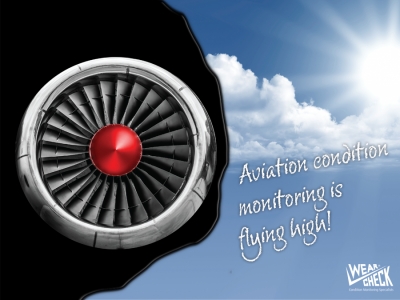by WearCheck technical manager, Steven Lumley
Reducing the risk of catastrophic aircraft engine failure, boosting safety and reducing maintenance costs – these are the primary goals of WearCheck’s dedicated aircraft testing programme.
Our thriving aviation division analyses used aircraft oil and filters for wear particles, oil degradation and cleanliness of hydraulic fluids. Our experienced aircraft diagnosticians provide expert insight into potential engine failure based on the test results.
I have spent over ten years in the aviation monitoring team, where we carry out oil and oil filter analysis on aircraft components such as piston engines, turboprop, turbofan and turboshaft engines, auxiliary power units (APU), helicopter rotor gearboxes and hydraulic systems.
In the programme, wear rates are monitored, contamination such as dust, water and fuel in the oil is detected, and the type of oil in use is verified. The tests can also detect oil overheating and oil degradation.
The four main wear debris monitoring techniques used in WearCheck’s laboratories are a spectrographic oil analysis programme (SOAP), oil filter debris analysis analytical ferrography - if no filter is available - and magnetic chip detector particle analysis. Oil filter analysis supplements spectrometric oil analysis as filters retain larger wear particles that are generated by abnormal wear.
So, what are the benefits of a bespoke aircraft condition monitoring programme?
Well, the financial and safety benefits of preventative oil filter analysis have been proven time and again. We have many case studies where serious incidents were avoided because the failing component was removed or repaired before disaster struck. In one case, a severely damaged bearing was removed from an accessory gearbox. Had the bearing failed, the result would have been an IFSD (in-flight shut-down).
In another instance, the presence of a large amount of metallic debris prompted the replacement of the propeller gearbox. Subsequent boroscope inspection of the gearbox revealed severe ring wear. Knowing that a component is compromised, and the extent of the damage enables the aircraft maintenance team to make critical decisions regarding replacement or repair – these actions save money by avoiding unplanned failure. Planned maintenance minimises the disruption to an aircraft’s schedule.
WearCheck is the only accredited laboratory for US-based Honeywell turbine engines in Africa. Several of our diagnosticians regularly complete Honeywell’s stringent bi-annual accreditation exam , including myself, Ravi Chetty and consultant Daan Burger.
Author bio: Steven Lara-Lee Lumley is in charge of technical development and training for condition monitoring specialists WearCheck. She holds an N6 mechanical engineering diploma (HND N6) as well as Honeywell aerospace and ICML III accreditations.
Steven joined WearCheck in 2008 as a diagnostician and worked her way up to the position of senior diagnostician, during which time she diagnosed her millionth used oil sample in addition to running oil analysis training courses for customers in several countries. In 2015, Steven was promoted to the position of technical manager.

